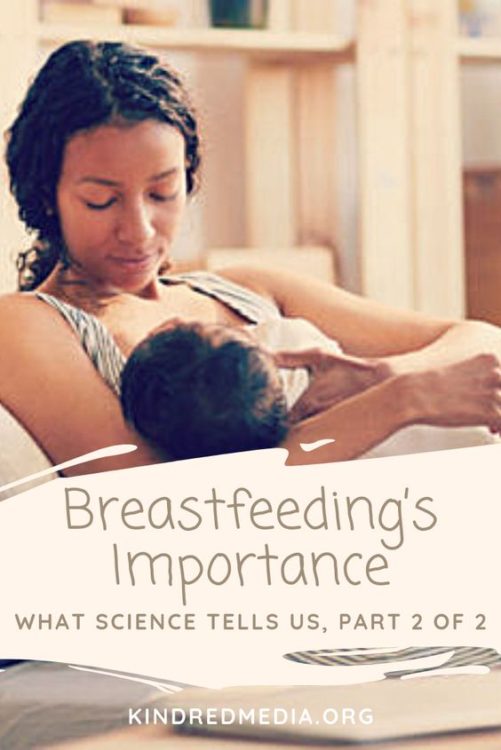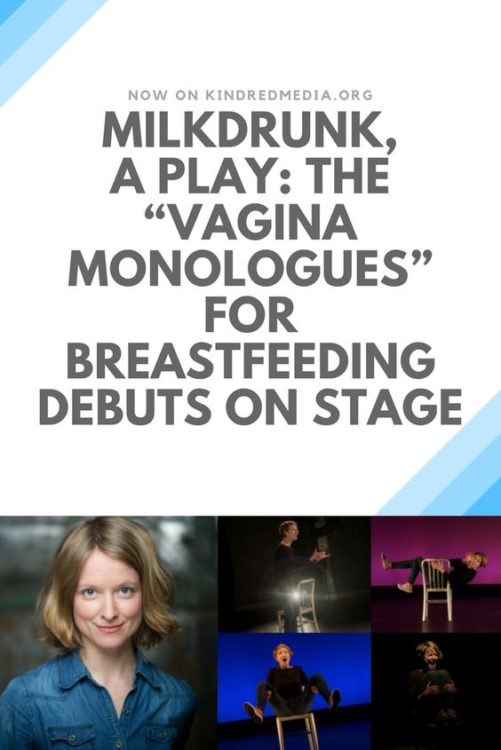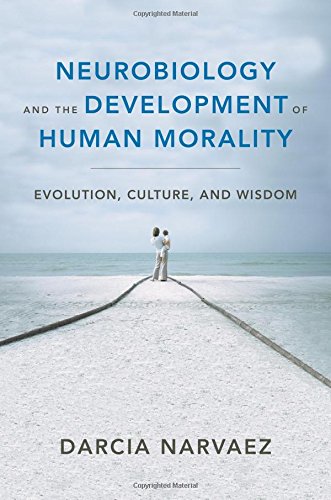The Missing Voice Of Babies: A New Book, Cribsheet, Promotes Baby Management Instead Of Attending To Basic Needs
Who speaks up for babies? The author of Cribsheet* does not.
A recent book (Cribsheet by E. Oster) attempts to guide new mothers with supposed scientifically-based guidance on what works. The author, however, has no baseline norms for what human childbearing and child raising looks like. She picks and chooses research but does not critique study designs or analyses. She does not reveal her biases underlying her recommendations (we all have them).

Let me first reveal my biases before giving some of my responses to the book. I advocate for the wellbeing of babies and optimal human development which are initially fostered by the evolved nest. I acknowledge that humans are social mammals and I pay attention to interdisciplinary research that contributes to our understanding of babies, to their basic needs and to optimizing human capacities generally. Societies depend on well-raised individuals for positive functioning.
Here are some of my critiques.
The author has no baseline for what is optimal child raising, has no sense of what a human social mammal needs to grow well, and ignores all the research studies on impairments from early life stress. Early on, she ricochets from one thing to another about mothers, but not babies, except for a few (poorly designed and interpreted) experiments. She takes the superficial, poorly designed studies as truth bearing, using a level of expertise that I would attribute to an undergraduate student.
Oster has a brief section on research methods and describes the different designs of studies, which makes the reader think she must know what she is talking about: randomized control, observation, case studies. The “gold standard” for experimental science is the first, randomized control. Several failures here.
- First, randomized control is useful for something new, like a new drug, for which there is exist no prior knowledge. But we have prior knowledge about child raising—2 million to 20+ million years of it. We are social mammals whose line has been around for 20-40 million years and have evolved a developmental system or nest for raising the young that helped our germ lines survive and thrive in the last 2 million years (Konner, 2005).
- Second, she fails to note that we cannot ethically randomly assign babies to the nest components (e.g., this baby will be carried all day, and this one left alone). So there are few studies of child raising components that can meet the “gold standard.” One must rely on animal studies for carefully drawn parallels. She cites none of these.
- Third, she cites studies that use an “intent to treat” design, meaning that the researchers tell the experimental what to do, don’t necessarily tell the control group what to do; the researchers don’t measure what participants truly did, but they conduct pre- and post- tests and draw conclusions based on assumptions participants did what they were told. These kinds of studies would never be published in any reputable psychology journal.
Oster says “sometimes you poke into a study and it doesn’t smell quite right” (p. 63). But she actually doesn’t do enough poking or smelling. With no admitted baseline for species normal parenting, she can pick and choose where to poke and smell, guided by her undisclosed biases.
One example: Breastfeeding

She says that breastfeeding does not matter long term, based on what evidence? She does not point out that the norm for our species is 2.5-8 years and that most studies of breastfeeding only look at 3 months, which means that the studies that find significant effects of breastfeeding are doing so on a smidgen of comparative data. She does not do much of a dive into existing data.
For example, there are studies of breastfed versus formula fed babies demonstrating the vast superiority of breastmilk for brain development even in the short term. These outcomes are not covered by Oster. Here are just two examples:
- At three months, breastfed infants show greater myelination (greater brain white matter—which fosters brain cell communication) than formula-fed infants (Deoni et al., 2013).
- Comparing various brain waves in one-year olds exclusively fed human milk or artificial formula, they concluded “breast milk helps earlier development and maturation of some aspects of the nervous system,” which they attributed to the full complement of polyunsaturated fatty acids provided by breast milk that is lacking in artificial formulas (from the abstract; Khedr, Farghaly, Sel-D, & Osman, 2007).
Inappropriate for a book presumably based on research, she lists footnotes at the end of the book without assigning them to particular statements in the text. This is NOT an approach taken in a credible research-based book which builds arguments based on studies and lists those studies so that readers can draw similar conclusions themselves.Moreover, the listings are meager for making the large conclusions she draws. As a result, the book comes across as a “defense of my parenting choices” dressed up as a research-based book.
The overall tone of the book is that mothers can and should do pretty much what they want to do or is convenient. There is no “view-from-the-baby.” It’s not really a surprise in a country that is known for its taboo on tenderness (Suttie, 1943), for an emphasis on behaviorism and control (e.g., Watson, 1928) and with a history of advocating the breaking of children’s spirits from advisers guided by pessimistic religion about the nature of children (Dobson, 1992).
Traditional societies are much more careful about how they treat babies and understand that babies are nurtured into being, shaped into humanity. For example, the Japanese traditionally act as if babies must be wooed into attachment and sociability (Doi, 1981). Humanity’s evolved nest provides the responsive supportive care that helps babies grow their full humanity.
Cribsheet is an engaging read that covers a lot of ground, with an impressive range of topics, from child care to media and, unfortunately, sleep training (also poorly done). It reads like a management book based on a diary of her experiences navigating life with her two children. The tone of the book is clinically detached from empathy for babies and children, reminding me of how Sheldon Cooper (Big Bang Theory) would approach child raising, a dangerous role model. Not surprisingly then, Oster recommends child-raising manuals that adopt behaviorist techniques, with no sense of how what they advise influences a person-in-the-making.
What children need to thrive—which we learn from developmental psychology, neuroscience, ethology, anthropology and clinical sciences—is warm responsive care attentive to their built-in needs. Cribsheet’s recommendationssound more like cold calculations, with little joy assumed in the process of being a parent. Better books for encouraging parent-baby and baby-parent responsive relationships, and mutual joy, are Attached at the Heart, Raising a Secure Child, and Parenting with Presence.
* Traditionally, a “crib sheet” is a cheat sheet that helps you pass an exam. From a baby’s point of view, the book recommendations fail to pass the test of meeting children’s basic needs.
REFERENCES

Deoni, S. C. L. Dean, D. C., III, Piryatinksy, I., O’Muircheartaigh, J., Waskiewicz, N., Lehman, K., . . . Dirks, H. (2013). Breastfeeding and early white matter development: A cross-sectional study. NeuroImage, 82, 77–86. Retrieved from http://dx.doi.org/10.1016/j.neuroimage.2013.05.090.
Dobson, James C. (1992). The New Dare to Discipline. Wheaton, IL: Tyndale House.
Doi, Takeo (1981). The Anatomy of Dependence: The Key Analysis of Japanese Behavior. (J. Bester, transl., 2nd ed.). Tokyo: Kodansha International.
Hart, S., Boylan, L. M. Carroll, S. R., Musick, Y. A., Kuratko, C., Border, B. G., Lampe, R. L. (2006). Newborn behavior differs with decosahexaenoic acid (DHA) levels in breast milk. Journal of Pediatric Psychology, 31, 221-226.
Khedr, E.M., Farghaly, W.M., Sel-D, A., & Osman, A.A. (2007). Neural maturation of breastfed and formula-fed infants. Acta Paediatrica, 93(6), 734-738.
Konner, M. (2005). Hunter-gatherer infancy and childhood: The !Kung and others. In B. Hewlett & M. Lamb (Eds.), Hunter-gatherer childhoods: Evolutionary, developmental and cultural perspectives (pp. 19-64). New Brunswick, NJ: Aldine Transaction.
Oster, E. (2019). Cribsheet: A data-driven guide to better, more relaxed parenting, from birth to preschool. New York: Penguin Press.
Suttie, I. (1935/1988). The origins of love and hate. London: Free Association Books.
Watson, J. B. (1928). Psychological care of infant and child. New York: W. W. Norton & Co.
Photo Shutterstock/leolintang


Thank you for this! I was excited to read Cribsheet and then so very disappointed by the contents. It read like a superficial justification for American parenting norms. Very sad.